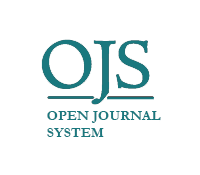THE INFLUENCE OF ACCOUNTING STANDARDS AND CREDIT RISK DIFFERENCES TO BANK PROFITABILITY (Studies in Commercial Banks and Rural Banks in Indonesia 2015 - 2017)
DOI:
https://doi.org/10.22219/jrak.v9i1.8204Keywords:
BPR, SAK ETAP, credit risk, BOPO, profitabilityAbstract
Small commercial banks and large rural banks or Bank Perkreditan Rakyat (BPR) are comparable in terms of the services they offer and their capital. However, they have to use different accounting standards. Small commercial banks apply SAK and implement PSAK 55 while BPR apply SAK ETAP. PSAK 55 stipulates a more sophisticated method for impairment calculation compared to SAK ETAP. This research aims to analyze the influence of the difference accounting standards, credit risk (NPL), and bank efficiency (BOPO) to the Bank profitability. The data comes from the financial reports of 19 commercial banks and 18 BPR during 2015-2017. The results of regression anaysis reveal that the implementation of SAK Umum and BOPO has a significant negative influence to the Bank profitability. This research provides an important information to assist DSAK-IAI’s plans to revise SAK ETAP by adopting IFRS for SME in the near future. The research suggests if BPR adopts IFRS for SME in the future, their profitability may decline due to PSAK 55’s impairment method in the IFRS for SME.
Downloads
Downloads
Published
Issue
Section
License

Jurnal Reviu Akuntansi dan Keuangan is licensed under a Creative Commons Attribution-NonCommercial-ShareAlike 4.0 International License.
Authors who publish with this journal agree to the following terms:
- Authors retain copyright and grant the journal right of first publication with the work simultaneously licensed under a Creative Commons Attribution-NonCommercial-ShareAlike 4.0 International License that allows others to share the work with an acknowledgement of the work's authorship and initial publication in this journal.
- Authors are able to enter into separate, additional contractual arrangements for the non-exclusive distribution of the journal's published version of the work (e.g., post it to an institutional repository or publish it in a book), with an acknowledgement of its initial publication in this journal.
- Authors are permitted and encouraged to post their work online (e.g., in institutional repositories or on their website) prior to and during the submission process, as it can lead to productive exchanges, as well as earlier and greater citation of published work (See The Effect of Open Access).










